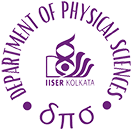Many-Body Interaction Governed Ultrafast Relaxation Dynamics of Hot Holes in CuS Nanoflakes and Photocatalytic Efficiency Enhanced CuS/Ag 2 S Nanocomposites
Research Highlights from Ultrafast and Terahertz spectroscopy (UFTS) group led by Dr. Kamaraju Natarajan
Covellite (CuS) is a direct band gap p-type semiconductor with a high intrinsic hole population causing localized surface plasmon resonance (LSPR) in NIR regime. Though these highly dense (~10 21 /cm 3 ) hole populations have immense potential to enhance photocatalytic efficiency, their ultrafast decay after photoexcitation causes a significant drawback. To enhance the photocatalytic efficiency of CuS, the relaxation of hot carriers needs to get delayed, and this can be achieved via transferring these hot carriers to another material with which CuS can stay in a composite formation. CuS/ is one such photocatalytic efficiency-enhanced nanocomposite, as observed in an earlier report. In this work, we have conducted non-degenerate ultrafast pump-probe transmission studies of CuS nanoparticles and CuS/Ag 2 S nanocomposites with varying pump fluence to explore their hot hole relaxation dynamics and determine the underlying physics of photocatalytic efficiency enhancement. The measured transient transmission data for CuS is found to originate from both photoinduced bleaching of intrinsic holes and photoinduced absorption of excited electrons. But, the localization of hot electrons in the conduction band of Ag 2 S is found to cause the disappearance of photoinduced absorption in the transient transmission of CuS/Ag 2 S at all the pump fluences except for the highest one. The first-order relaxation process based multi-exponential (ME) modeling of transient transmission data for CuS reveals three hole decay channels (∼240-410 fs, ∼24-144 ps, ≳10 µs) along with the electron decay channel of ∼1-2.6 ps. Whereas for CuS/Ag 2 S, the electron decay channel disappears, and a new hole decay channel appears making a total of four decay channels for holes (∼230-470 fs, ∼10-49 ps, ≳10 µs, ∼132-326 ps). The decay time constants are found to vary considerably with increasing pump fluence (wide range of pump fluence ranging from 0.04 mJ/cm 2 to 1.22 mJ/cm 2 ), indicating the involvement of higher-order decay processes and suggesting the need of modeling using kinetic rate equation that involves appropriate higher order terms. Extraction of transient hole densities from pump-probe measurement and modeling them using a suitable kinetic rate equation (KRE) model capable of detecting higher-order processes have been performed to reveal the exact involvement. KRE modeling extracts first, second and third order decay rate constants. The first order decay agrees with the long decay time obtained from ME fitting. And the second and third order decay rates for CuS/ get reduced by almost one order compared to CuS, indicating a reduction in overall decay rates for CuS/ consistent with its enhanced photocatalytic activity. These results are found to indicate the presence of fast trapping of hot holes and a three-hole Auger kind of process involving two free holes and one trapped hole. These observations are very much relevant for fabricating efficient light harvesting devices using CuS and its composites.
Cite This: https://doi.org/10.1021/acsaom.3c00153
#Research Highlight
Posted on: July 10th, 2023

